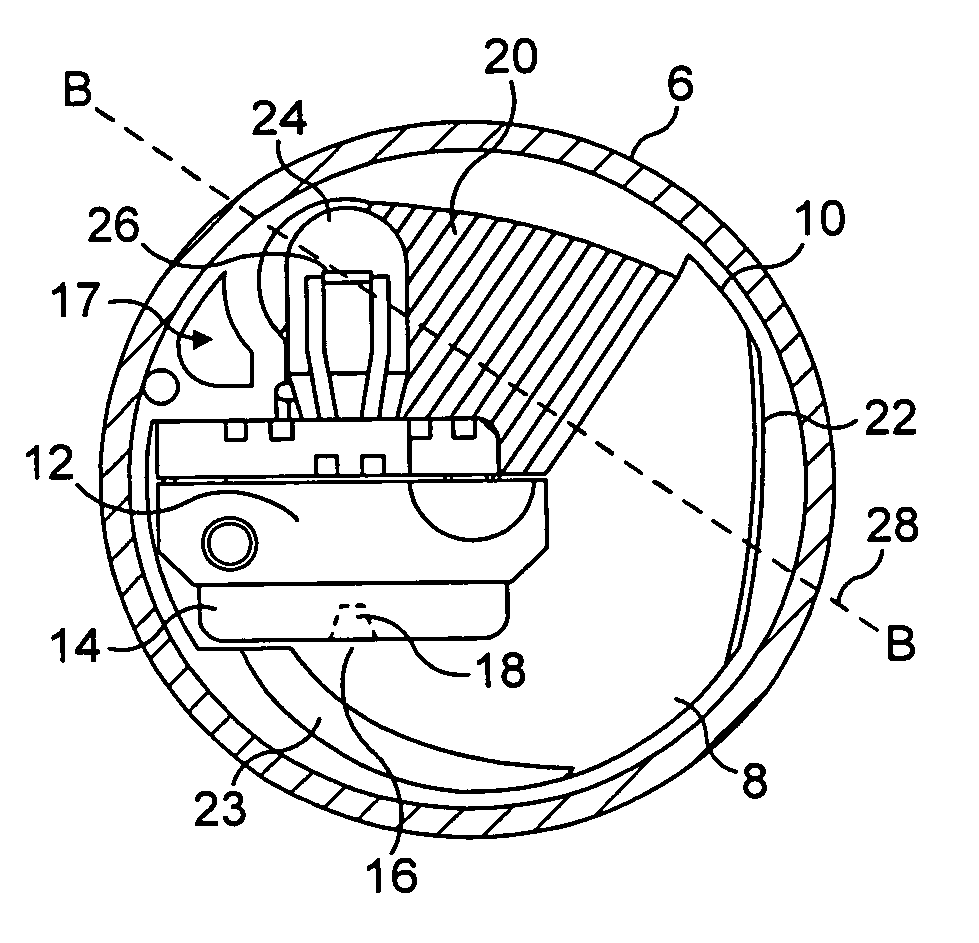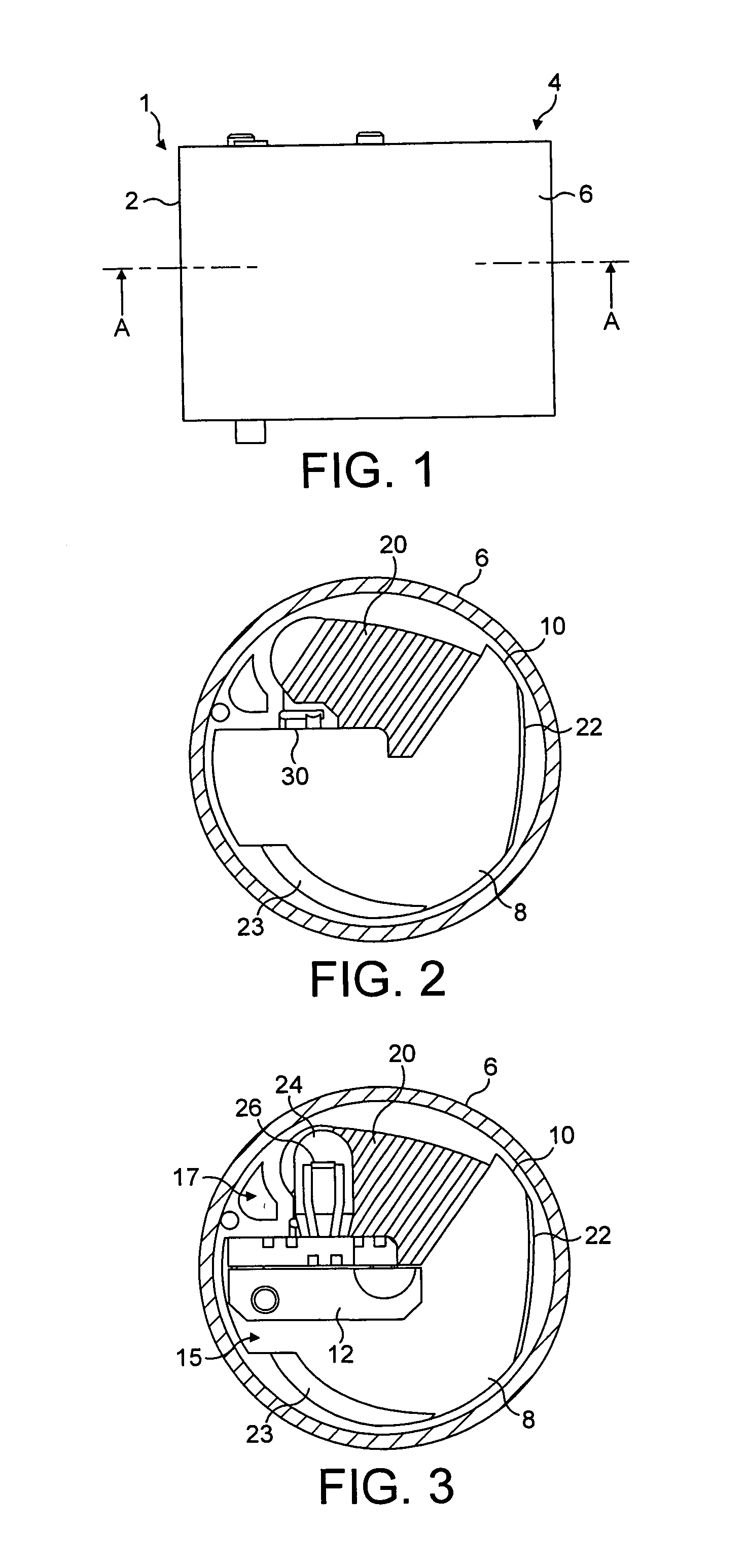Optical absorption gas sensor
a technology of optical absorption and gas sensor, which is applied in the field of optical absorption gas sensor, can solve the problems of small manufacturing errors that can have a significant adverse effect on the amount of light reaching the detector, particularly acute problems, and special concerns, and achieve good performan
- Summary
- Abstract
- Description
- Claims
- Application Information
AI Technical Summary
Benefits of technology
Problems solved by technology
Method used
Image
Examples
Embodiment Construction
[0064]FIG. 1 is a side view of an optical absorption gas sensor 1 having a body 2, which is generally in the shape of a right circular cylinder, a top surface 4 and cylindrical outer wall 6. FIG. 2 is a cross-section of the sensor through plane A-A viewed in an upwards direction, omitting the detector assembly (including the detector) and the incandescent lamp. FIG. 3 is a corresponding cross-section, omitting only the detector. FIG. 4 is a corresponding cross-section, omitting the incandescent lamp, and FIG. 5 is a corresponding cross-section which includes all components.
[0065]The sensor comprises an internal chamber 8 (which is also generally in the form of a right circular cylinder), defined by the inner wall 10 of the sensor body. A detector assembly 12 extends from the inner wall of the sensor into the chamber and supports a detector 14 in the form of a disc with a planar first surface 16, which is attached to a first side of the detector assembly. The detector assembly and se...
PUM
 Login to View More
Login to View More Abstract
Description
Claims
Application Information
 Login to View More
Login to View More - R&D
- Intellectual Property
- Life Sciences
- Materials
- Tech Scout
- Unparalleled Data Quality
- Higher Quality Content
- 60% Fewer Hallucinations
Browse by: Latest US Patents, China's latest patents, Technical Efficacy Thesaurus, Application Domain, Technology Topic, Popular Technical Reports.
© 2025 PatSnap. All rights reserved.Legal|Privacy policy|Modern Slavery Act Transparency Statement|Sitemap|About US| Contact US: help@patsnap.com



